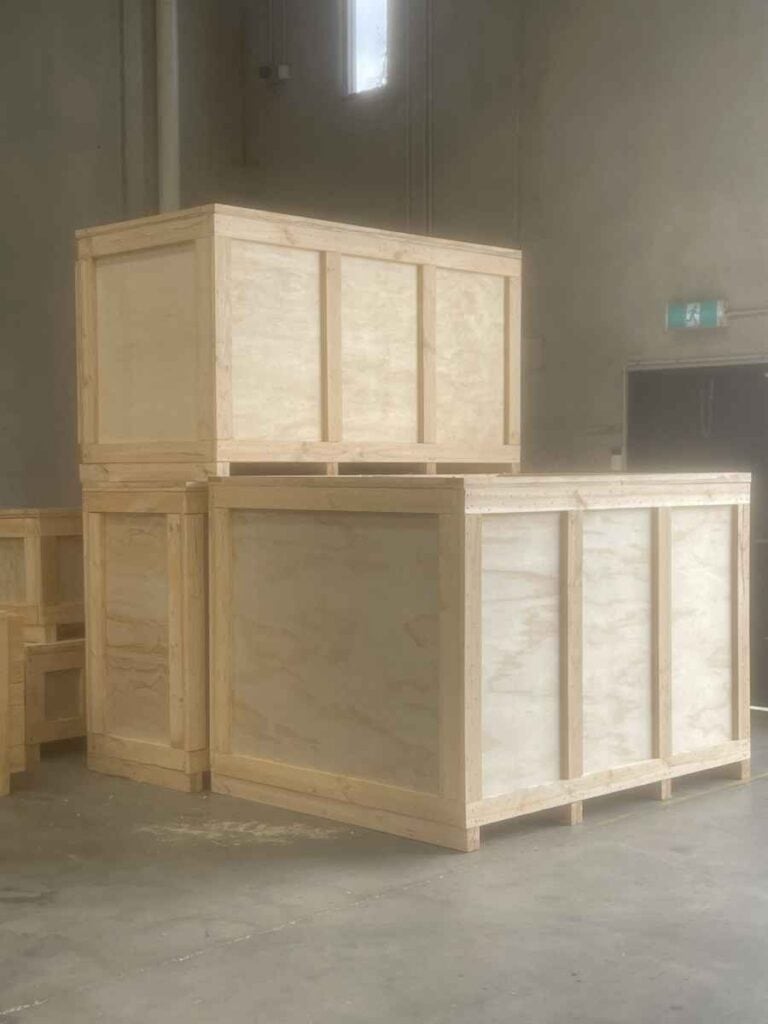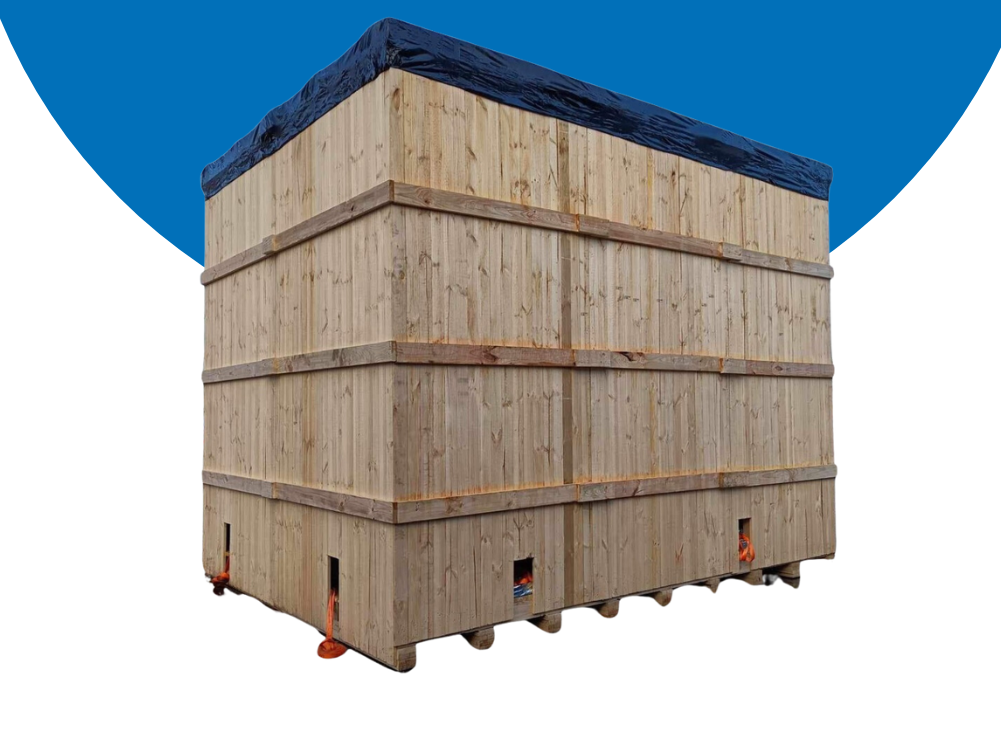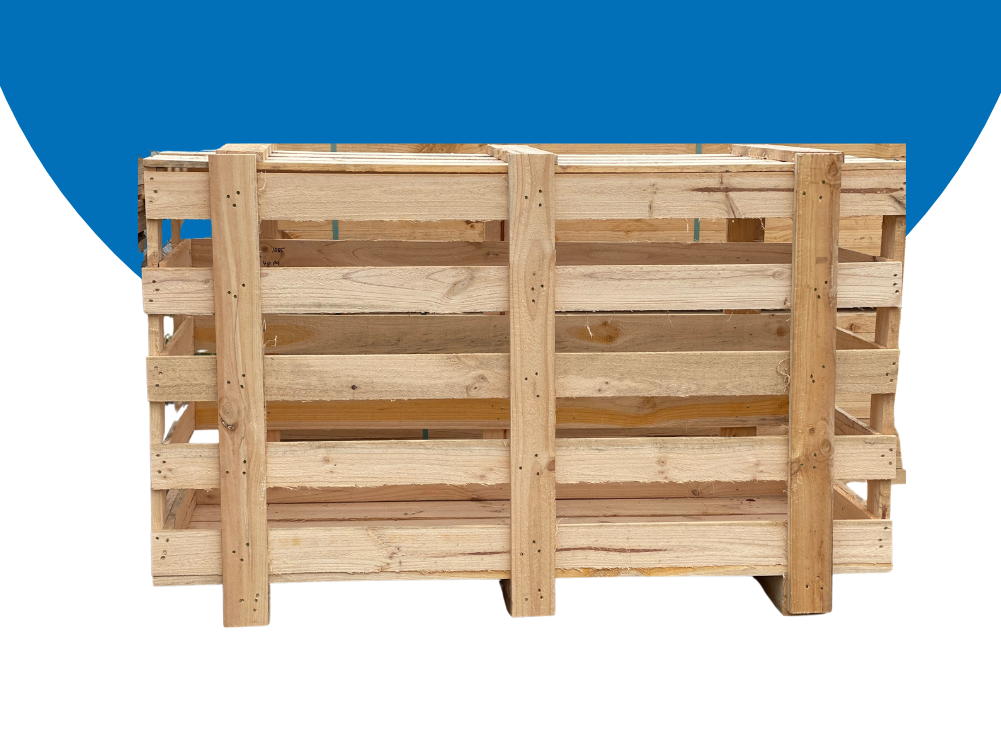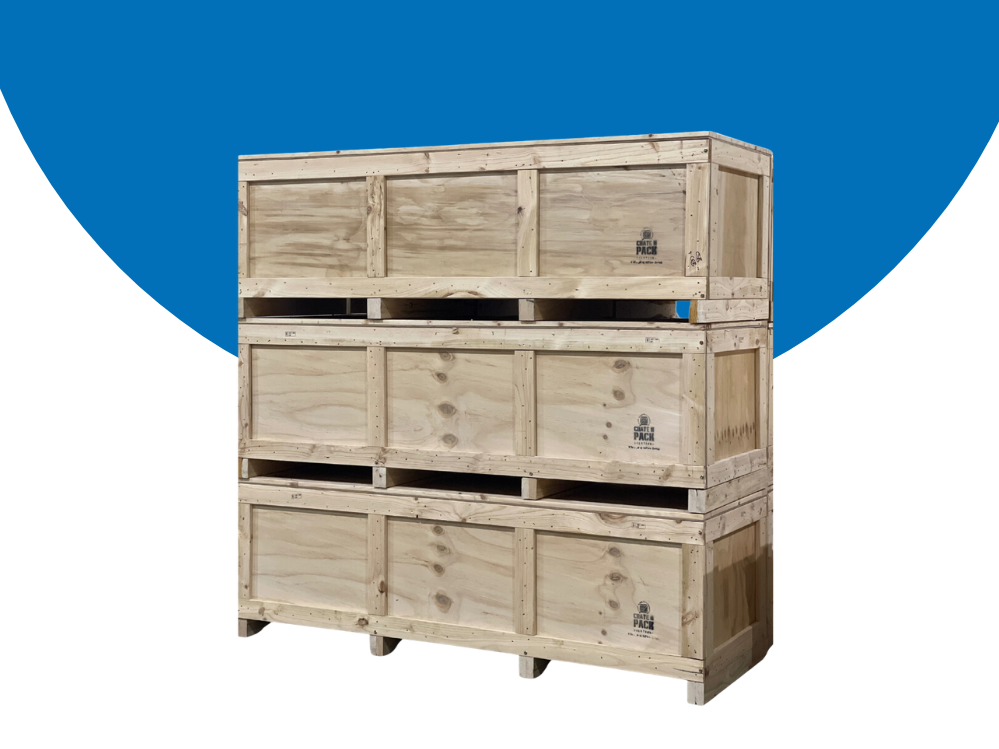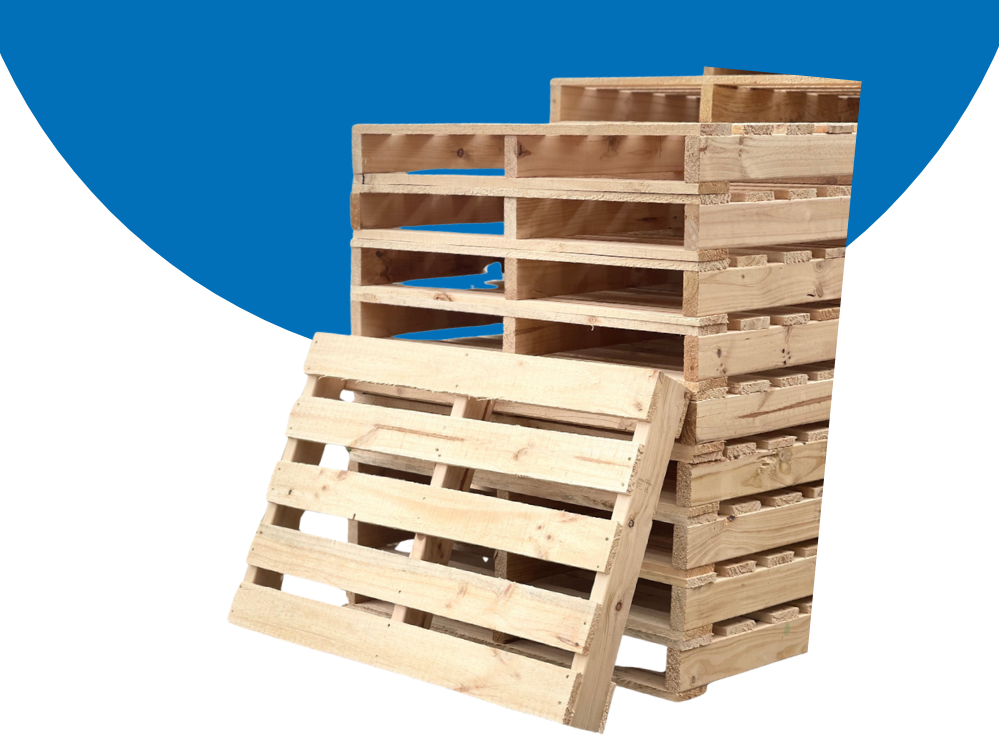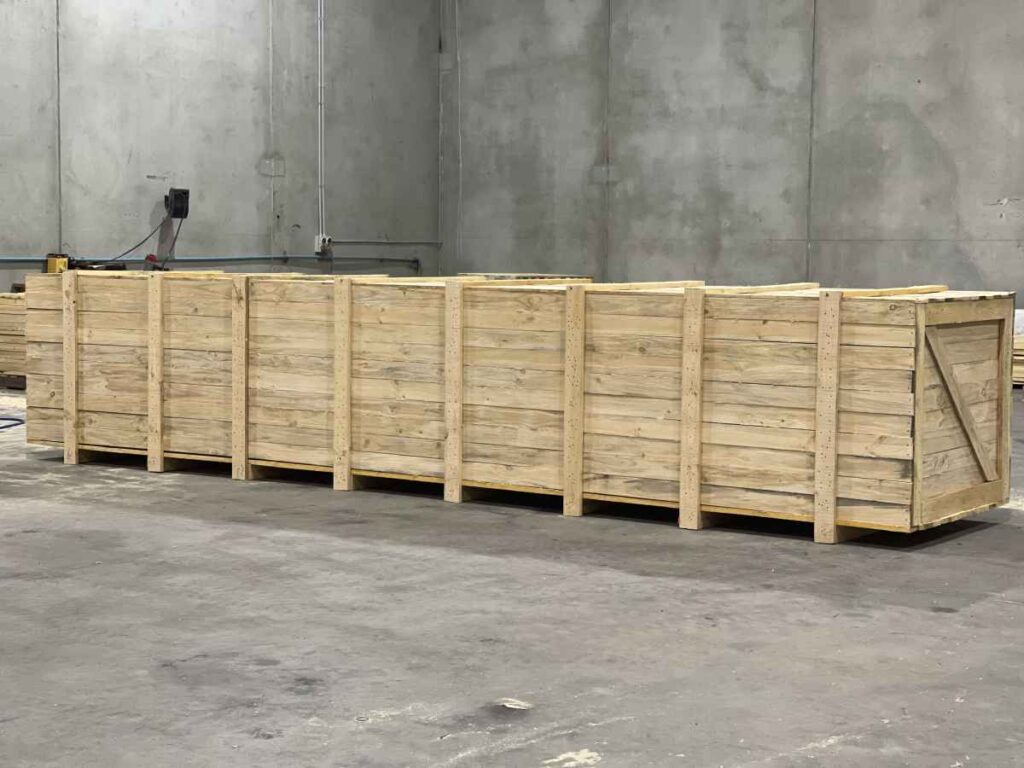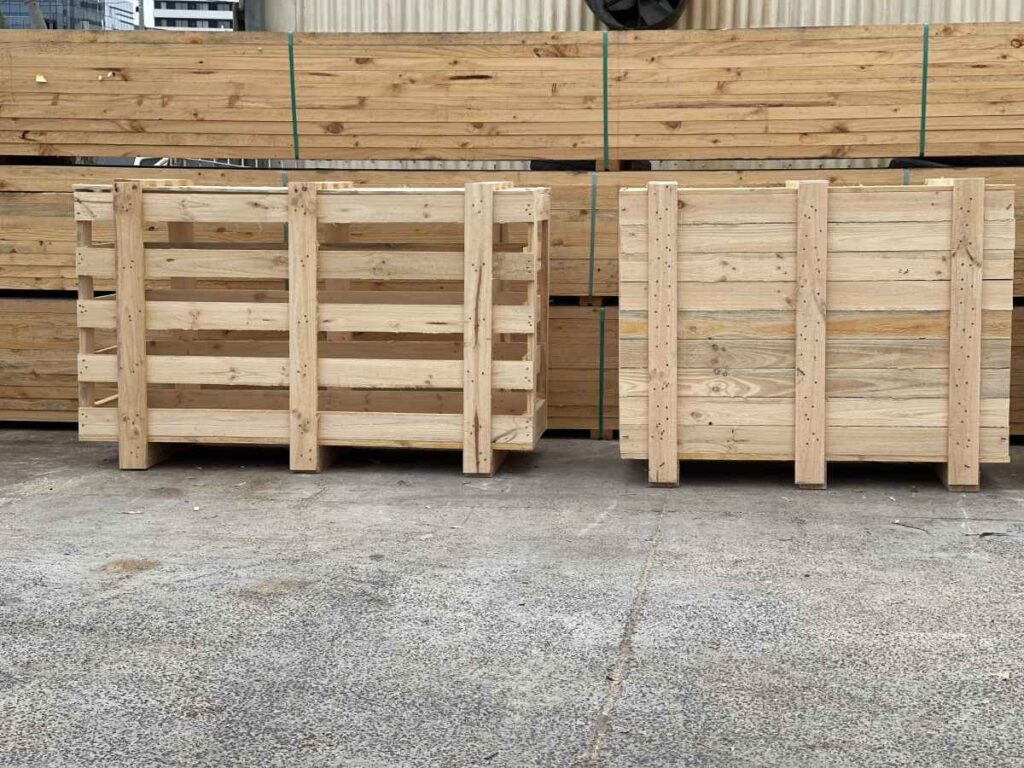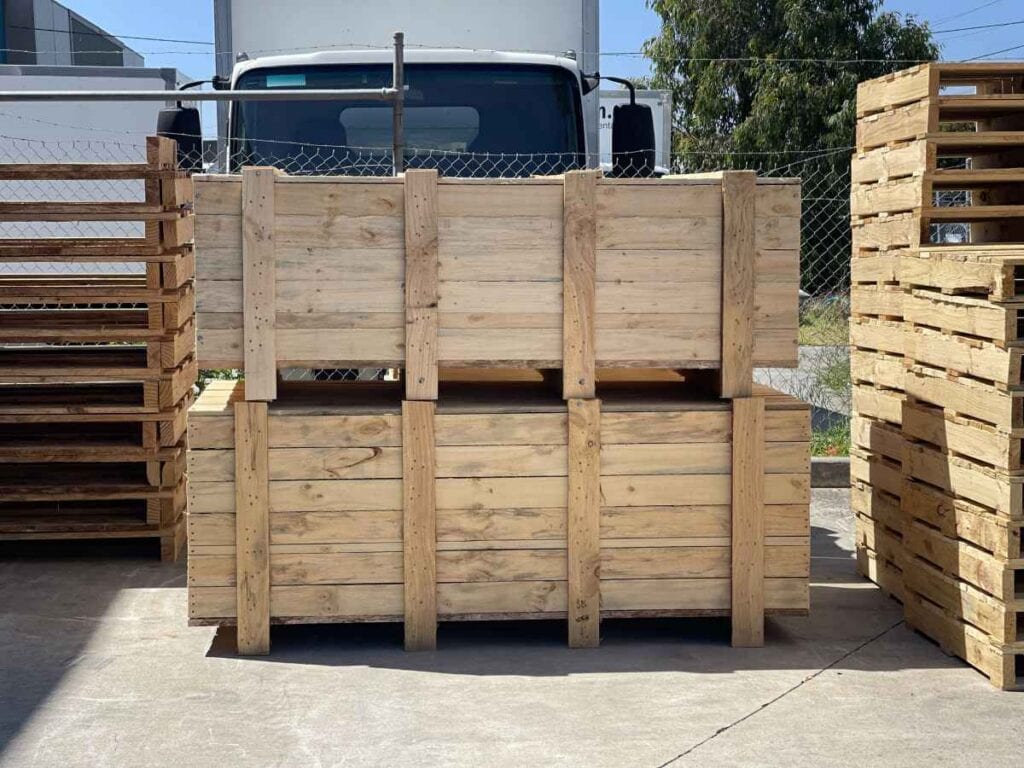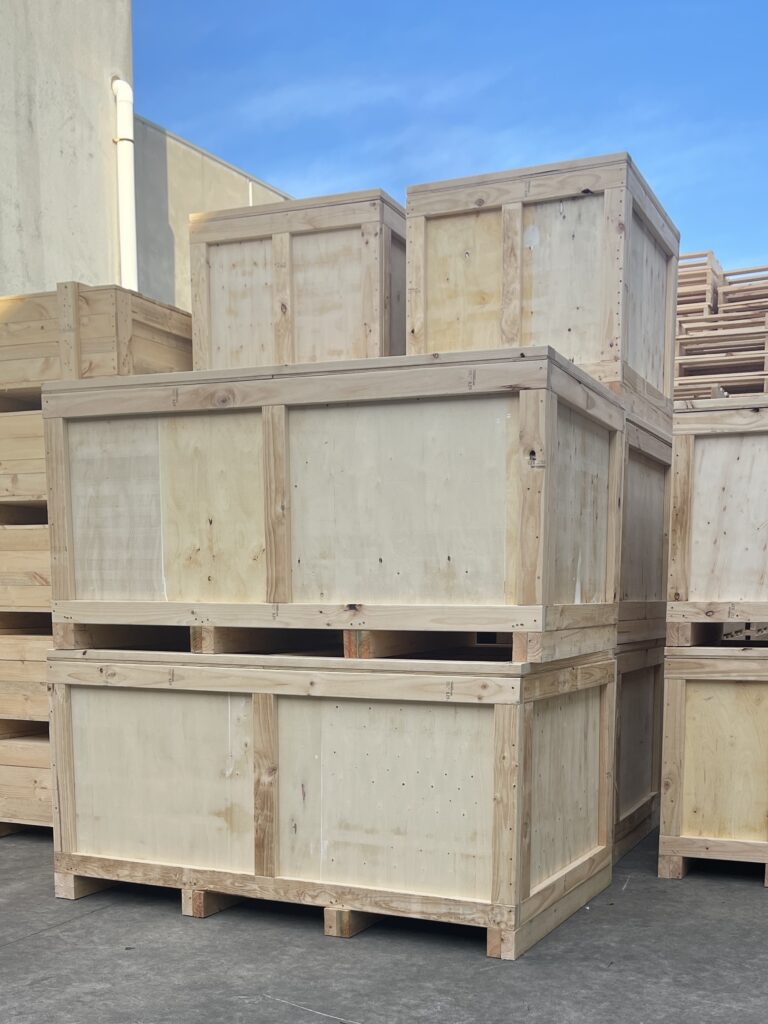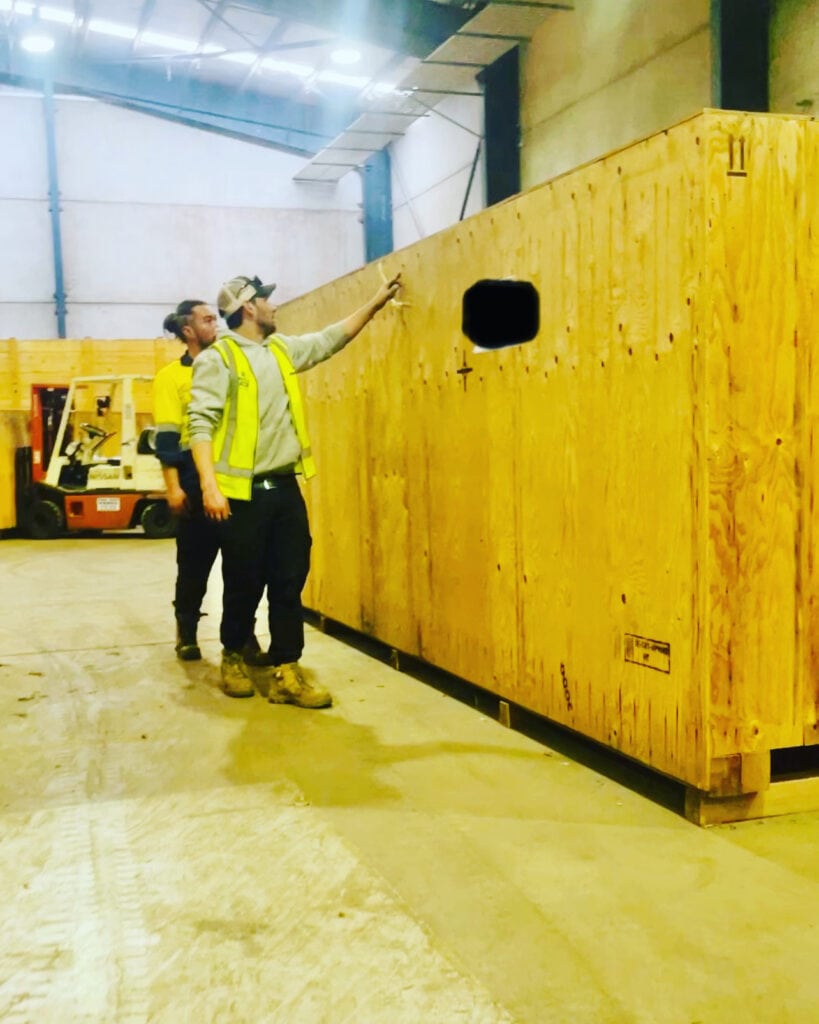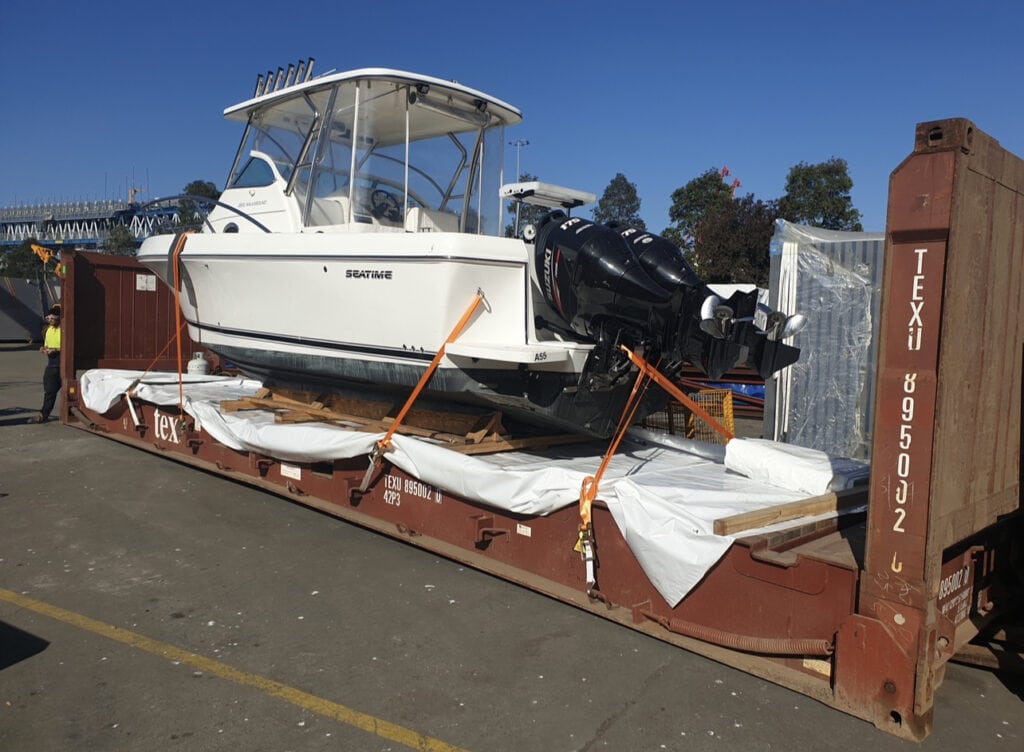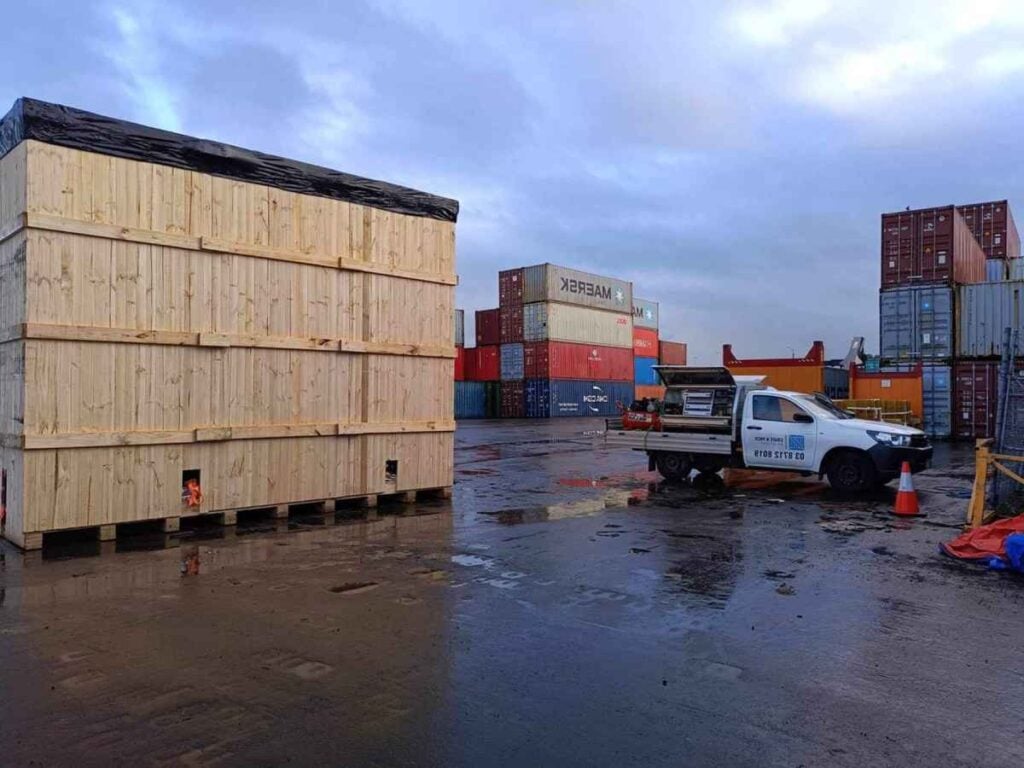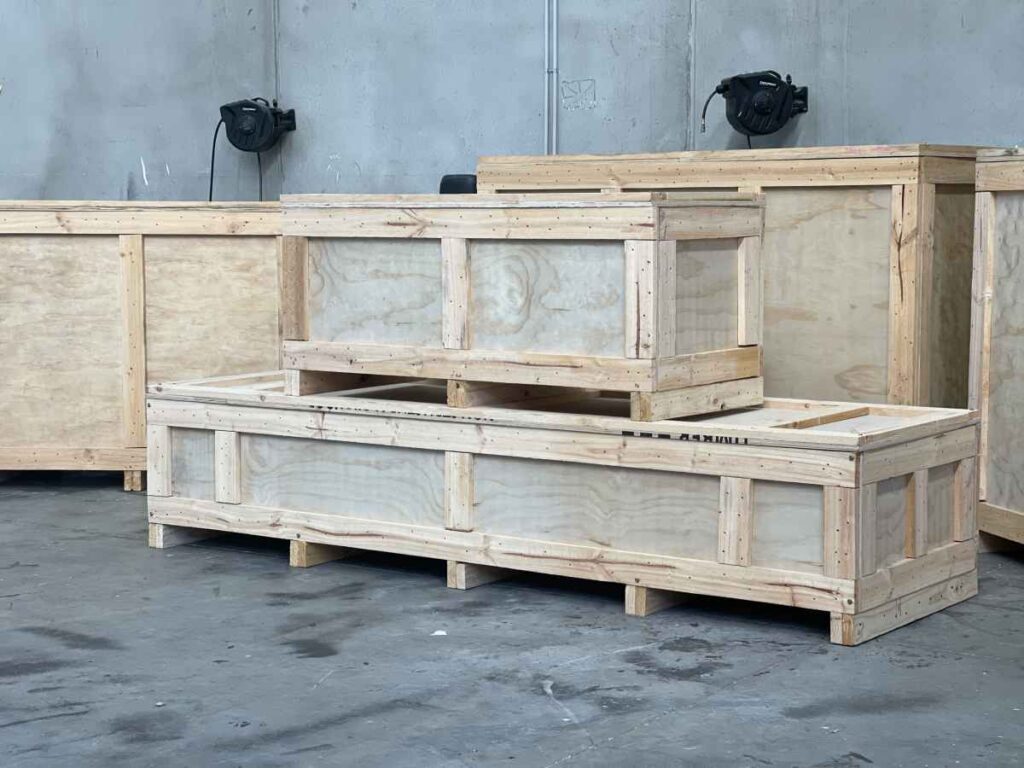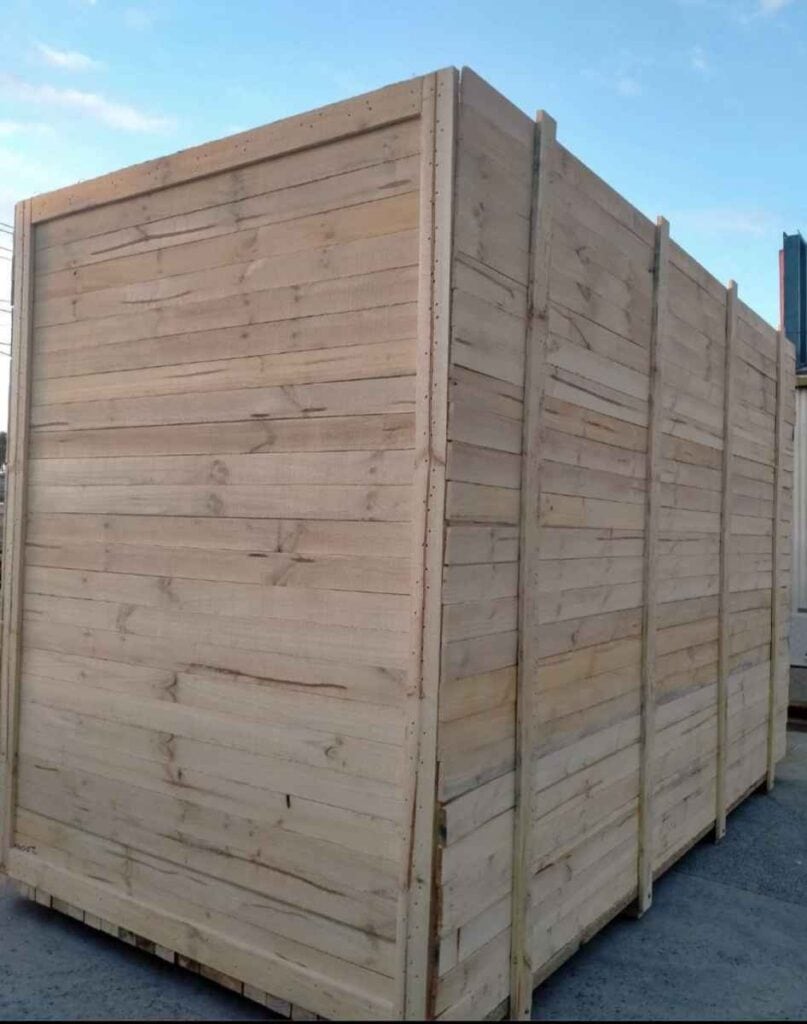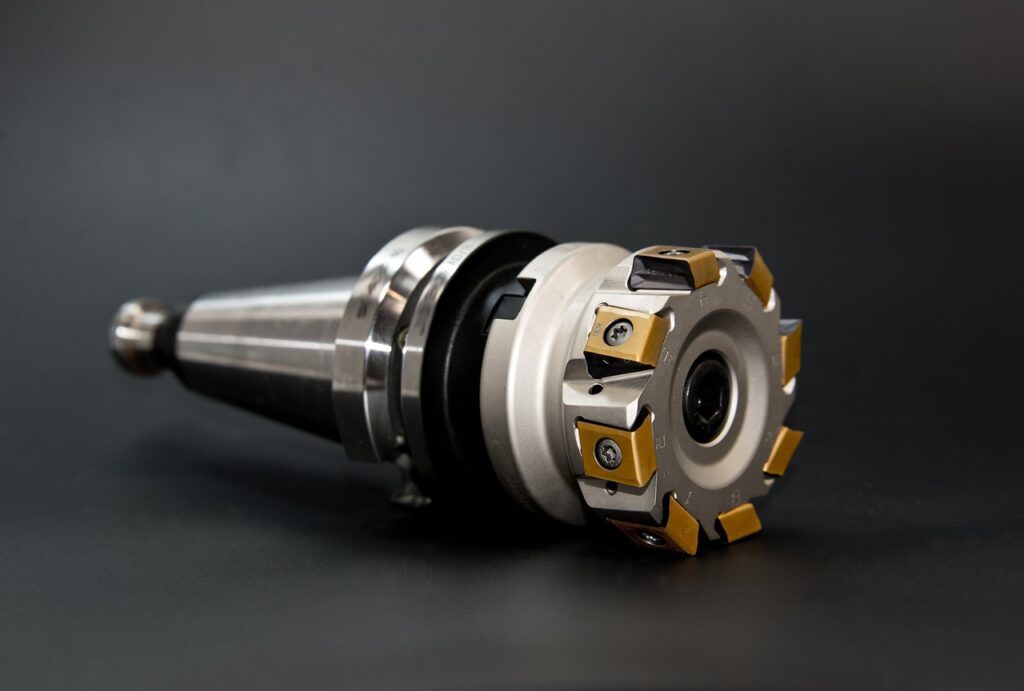Crating Timber: The Backbone of Secure Shipping
When it comes to securely shipping valuable goods across town or around the world, the material used for crating is a critical consideration. Timber, with its strength, flexibility, and versatility, has long been the backbone of the shipping industry. Whether you're exporting delicate machinery, bulk items, or fragile auction pieces, crating timber offers the ideal balance of protection and affordability.
But not all timber is created equal, and understanding the different types of timber used for crates and cases can make all the difference in how well your products arrive at their destination. In this blog, we’ll dive deep into what crating timber is, why it’s so essential, and how to select the right type for your shipping needs.
In today’s global shipping industry, crating timber continues to prove itself as the preferred packaging material for businesses ranging from manufacturers to auction houses. Whether you’re a small business looking for custom timber crates or a large-scale operation seeking bulk crating solutions, timber crates provide the reliability you need. At Crate N Pack Solutions, we pride ourselves on offering high-quality timber crates that protect your goods while maintaining affordability.
What is Crating Timber?
Crating timber refers to the wood used to construct crates, cases, and other packaging solutions for transporting goods. It’s chosen specifically for its strength, durability, and adaptability in various shipping conditions. Timber crates are widely used because they can handle heavy loads, protect fragile items, and withstand the rigours of international shipping.
But what exactly qualifies as crating timber? It’s typically timber that has been processed to handle the demands of shipping, including being heat-treated for export compliance, cut into specific sizes for various crate types, and chosen for its inherent properties like flexibility, resistance to moisture, and durability. Crating timber isn’t just any wood—it’s selected for its performance in high-pressure situations.
Why Timber is Used for Crating
Timber has been a trusted material in the packaging industry for centuries due to its natural properties. When compared to materials like plastic or metal, timber stands out for several key reasons:
Strength and Durability: Timber offers the ability to carry heavy loads without compromising its structure. Whether you're shipping large industrial machinery or fragile artwork, timber crates can be customized to hold various weights and sizes.
Flexibility and Customization: One of timber’s greatest advantages is its adaptability. Timber can be cut, shaped, and modified to create custom crating solutions that perfectly fit your product’s needs. Whether you need a small wooden case or a 12-meter machine crate, timber provides the flexibility required for bespoke crating solutions.
Environmental Benefits: Timber is a sustainable, renewable resource, making it an eco-friendly choice for shipping. Recyclability is a significant advantage, and timber crates can often be reused, repurposed, or recycled after their initial use. This reduces the overall environmental impact compared to disposable or non-biodegradable materials like plastic.
Cost-Effectiveness: Timber is often more affordable than other materials, particularly when sourcing locally. It provides the strength and durability required without the higher costs associated with materials like metal.
Compliance with Shipping Regulations: When shipping internationally, wooden crates made from heat-treated timber comply with global regulations like ISPM 15, which ensures that the wood is free from pests and safe for export.
These reasons make timber the go-to choice for many industries looking to ship products safely and securely.
Key Benefits of Using Timber for Crating
When it comes to packaging and shipping, the material choice is key to ensuring the safety and integrity of goods. Timber, specifically crating timber, has become the top choice for many industries due to its various benefits. Let’s explore why timber stands out and why businesses around the world trust it for shipping.
Durability and Strength
Crating timber is known for its remarkable strength, making it ideal for packaging heavy machinery, industrial components, and valuable items. Timber crates can be reinforced, ensuring they handle everything from the vibrations of transport to the pressure of stacking in warehouses. Unlike plastic or cardboard alternatives, timber maintains its structural integrity even in harsh environments, giving you the peace of mind that your goods are well protected.
Timber crates are designed to withstand various types of pressure, and they offer resistance against external forces like impacts, moisture, and even extreme temperatures. When shipping valuable products, especially fragile or heavy ones, durability is non-negotiable—and timber delivers on that promise.
Flexibility
One of the best features of timber as a crating material is its customizability. Timber can be easily tailored to create crates of any size, shape, or format to suit your shipping needs. Whether you need a small, compact case for delicate items or a massive crate for large machinery, timber can be cut, shaped, and reinforced as needed. This versatility extends to various design options like top-loading crates, side-loading crates, or crates with removable panels for ease of access.
Additionally, timber crates can accommodate add-ons such as foam lining, hinges, locks, and internal bracing. These features allow for greater protection of high-value or delicate items, ensuring they arrive in perfect condition.
Cost-Effectiveness
For many businesses, timber represents a cost-effective option for crating without sacrificing quality. Timber, especially softwoods like pine, is readily available and can be sourced at a lower cost compared to materials like metal or certain plastics. This affordability makes timber crates an attractive option for companies looking to reduce packaging costs while still ensuring product safety.
Moreover, timber crates are reusable and can be repaired if damaged, further adding to their cost-effectiveness. With proper care, timber crates can be used multiple times, making them a sound investment for businesses with ongoing shipping needs.
Environmental Benefits
In today’s eco-conscious world, sustainability is a growing concern for many businesses. Timber is a renewable, biodegradable resource, which means it has a much smaller environmental footprint compared to non-recyclable materials like plastic. Many timber sources are certified by the Forest Stewardship Council (FSC), ensuring that the wood comes from responsibly managed forests.
Additionally, timber crates can often be reused or repurposed, reducing waste. Even if a timber crate has reached the end of its life, it can be recycled into wood chips, mulch, or other products. This makes timber a more environmentally friendly option compared to packaging materials that contribute to landfill waste.
Compliance with International Shipping Regulations
When shipping goods internationally, particularly via sea or air, compliance with regulations is crucial. Timber crates, when heat-treated, meet the ISPM 15 standard, an international regulation that ensures wooden packaging is free from pests that could harm foreign ecosystems. Heat-treated timber is a requirement for shipping goods across borders, and using it ensures your shipments are not held up or rejected by customs.
At Crate N Pack Solutions, we use ISPM 15-certified timber for all export crates, ensuring full compliance with international shipping laws.
Types of Timber Used in the Crating Industry
Not all timber is the same, and choosing the right type for your crates can impact the safety, durability, and cost of your packaging solution. Here’s a closer look at the common types of timber used in the crating industry, each with its unique properties and benefits.
Pine
Pine is a softwood that’s widely used in the crating industry due to its affordability and availability. It is lightweight, easy to work with, and can be cut into a variety of sizes to create custom crates. Pine is ideal for general-purpose crates, especially for shipments where weight is a consideration, such as air freight. It’s also a cost-effective option, making it popular for businesses looking to reduce crating expenses without compromising on quality.
Despite being a softwood, pine offers excellent durability when properly treated and is often the go-to choice for lightweight, domestic shipments.
Hardwoods (e.g., Oak, Birch)
For more heavy-duty applications, hardwoods like oak and birch are preferred. These timbers are denser and stronger than softwoods, making them perfect for crating heavy or high-value items that need extra protection. Hardwoods are often used for machinery crates, industrial equipment, and export crates that need to withstand long-distance transport.
While hardwood is more expensive than softwood, its added strength and durability make it the better choice for high-stress shipping environments. Crate N Pack Solutions regularly uses hardwood for crates that need to handle substantial weight or demanding shipping conditions.
Plywood
Plywood, a type of engineered timber, is created by bonding thin layers of wood veneer together, resulting in a material that is both strong and lightweight. It’s a great option for creating fully enclosed cases and crates where weight reduction is key, such as air freight shipments. Plywood offers excellent protection for high-value goods, machinery, and delicate equipment.
Plywood crates can be customized with various features like foam lining and internal bracing, ensuring maximum protection for sensitive cargo. The material’s versatility, combined with its strength-to-weight ratio, makes plywood crates a popular choice in the shipping industry.
Engineered Timber
Engineered timber refers to composite wood products that are manufactured for greater strength and stability. These products, such as laminated veneer lumber (LVL) and cross-laminated timber (CLT), are designed to withstand more pressure than standard timber. Engineered timber is commonly used for crates that need extra reinforcement or for packaging goods that require superior structural integrity.
This type of timber is often more expensive than natural wood but offers enhanced durability, making it ideal for specialized shipping needs.
Heat-Treated Timber and Export Compliance
Shipping goods internationally means adhering to strict regulations, especially when it comes to wooden packaging materials. One of the most important aspects of using timber for export is ensuring that it has been heat-treated to comply with international standards.
What is Heat-Treated Timber?
Heat-treated timber undergoes a process where it is heated to a specific temperature to eliminate pests, fungi, and other organisms that may be present in the wood. This process is critical for ensuring that timber used in crates doesn’t carry invasive species to foreign countries, which could harm local ecosystems.
The most widely recognized standard for heat-treated timber is ISPM 15, which was developed by the International Plant Protection Convention (IPPC). ISPM 15-certified timber is required for all wooden packaging used in international shipping to prevent the spread of pests across borders.
Why Heat-Treated Timber Matters for Export Crates
Compliance with ISPM 15 is not optional when it comes to exporting goods in timber crates. Countries around the world have adopted these standards, and failure to comply can result in customs delays, penalties, or even the return of your shipment. Using heat-treated timber ensures that your goods can be shipped internationally without any issues.
At Crate N Pack Solutions, all of our export crates are made from ISPM 15-certified heat-treated timber. This guarantees that your crates meet international shipping regulations and that your goods will arrive safely and on time.
The Heat-Treating Process
Heat-treating timber involves heating the wood to a core temperature of 56 degrees Celsius for at least 30 minutes. This process is done in a controlled environment to ensure that the wood is free from pests and diseases. Once treated, the timber is stamped with a certification mark, which verifies that it meets the ISPM 15 standard.
How Crating Timber is Processed and Prepared
Before timber can be used to build sturdy, reliable crates, it must go through several stages of processing. From initial harvesting to final assembly, the journey of crating timber involves various steps that enhance its structural properties and ensure it meets industry standards for shipping.
Harvesting the Timber
Timber used for crating is often sourced from softwood and hardwood trees like pine, spruce, oak, and birch. These types of timber are chosen because they are either strong enough to handle heavy loads or flexible enough to be customized for various shipping needs.
At Crate N Pack Solutions, we prioritize sustainability, ensuring that our timber is sourced from responsibly managed forests certified by the Forest Stewardship Council (FSC). This not only helps the environment but also ensures a consistent supply of high-quality wood.
Cutting and Drying the Timber
Once harvested, the timber is transported to sawmills, where it is cut into the appropriate sizes for crating. Depending on the requirements, the wood is either cut into standard sizes for typical crates or custom sizes for specific orders. At this stage, the timber is also dried, usually through kiln drying, to remove excess moisture. This step is crucial because moisture can lead to warping, shrinking, or expanding, all of which can compromise the integrity of a crate.
Kiln-drying also makes the timber more resistant to rot and decay, extending the lifespan of the crates and ensuring they perform well in various weather conditions, particularly when exposed to high humidity or fluctuating temperatures during shipping.
Heat Treatment for Export Crates
As mentioned earlier, timber destined for export crates must undergo heat treatment to comply with international regulations like ISPM 15. This process ensures that any pests or larvae living in the wood are eliminated, making it safe for cross-border shipping.
Heat treatment typically involves placing the timber in a specialized chamber, where it is heated to a core temperature of 56 degrees Celsius for at least 30 minutes. This controlled process ensures that the wood is safe for use in international shipping and that it will not introduce invasive species into foreign ecosystems.
Once heat-treated, the timber is stamped with a certification mark indicating that it complies with ISPM 15. This certification is required for all wooden packaging used in international trade.
Fabrication and Assembly
The final stage of preparing crating timber is the fabrication and assembly process. At Crate N Pack Solutions, we take pride in customizing each crate to suit our customers’ needs. After the timber is cut to size and treated, it is assembled into crates, cases, and pallets.
Whether you need side-loading crates, top-loading crates, or specialized designs for unique items, the fabrication process ensures that your shipping containers are tailored to the dimensions and specifications of your goods. Depending on the nature of the shipment, the crates can also be outfitted with protective linings, reinforcements, hinges, or custom features like foam inserts and locks.
Different Types of Timber Crates for Various Industries
Crating timber is used in a wide range of industries, from aerospace to retail, making it a versatile material for shipping solutions. The type of timber crate you choose will depend on the size, weight, and fragility of the items you’re shipping, as well as the mode of transportation. Below, we’ll explore the different types of timber crates and the industries that rely on them.
Industrial Crates
Industries such as manufacturing, heavy machinery, and construction rely on industrial heavy duty timber crates to ship large, heavy equipment safely. These crates are built to withstand significant pressure and rough handling during transit. Often made from a combination of hardwoods and softwoods, industrial crates are reinforced with additional bracing to ensure that they can support the weight of heavy loads.
For example, large machinery or industrial components weighing several tonnes can be safely transported in custom-built timber crates with internal bracing and extra support for added strength. These crates may also be equipped with foam linings or shock absorbers to protect sensitive machinery from impact damage during transit.
Export Crates
Export crates are built specifically for international shipping. They are typically made from heat-treated timber to comply with ISPM 15 regulations. These crates are designed to withstand the pressures of sea or air transport, protecting goods from moisture, rough handling, and fluctuating temperatures.
Export crates are commonly used in industries such as automotive, electronics, and aerospace, where high-value goods are often shipped to distant locations. Whether you're shipping engine components, electronic equipment, or even aircraft parts, export crates provide the necessary protection to ensure that your goods arrive safely.
At Crate N Pack Solutions, our export crates are built with the unique requirements of international shipping in mind. Each crate is customized to fit the size and weight of your shipment, ensuring optimal protection throughout its journey.
Shipping Crates
Shipping crates are designed for both domestic and international transportation and can be used across various industries, including retail, logistics, and e-commerce. They are typically made from softwoods like pine and offer a cost-effective solution for shipping medium to heavy goods. Shipping crates provide flexibility in terms of design, with options for top-loading, side-loading, or collapsible crates for easy storage when not in use.
Retailers often use timber shipping crates to send bulk orders of products to distribution centres or retail stores. These crates can be stacked easily, allowing businesses to maximize space in shipping containers or warehouses.
Custom Timber Crates
For businesses with unique or oversized items, custom timber crates are the best solution. These crates are designed and built specifically for the item being shipped, ensuring a perfect fit and maximum protection. Custom crates are used across industries like fine art, auctions, and high-end retail, where items require specialized care during transport.
For example, auction houses often use custom timber crates to ship valuable paintings, sculptures, or antiques. These crates may feature foam inserts, padding, or reinforced corners to protect delicate items from damage.
Timber Pallet Crates
Timber pallet crates combine the convenience of a pallet with the protection of a crate. They are used in industries such as warehousing, logistics, and wholesale, where products need to be stacked and transported on pallets. These crates are ideal for bulk shipments of goods, as they allow for easy handling by forklifts or pallet jacks.
At Crate N Pack Solutions, we offer a range of custom-built timber pallet crates designed to fit your specific needs, whether you’re shipping small parts, bulk products, or industrial components.
Crating Timber for Auction Houses and Fine Art
When it comes to shipping high-value, fragile, or irreplaceable items such as artwork and antiques, the choice of crating timber is crucial. Auction houses, galleries, and private collectors often rely on custom timber crates to safely transport their valuable items, ensuring that they arrive in perfect condition, regardless of how far they need to travel.
Protecting Fragile and High-Value ItemsTimber crates offer superior protection for fragile items like paintings, sculptures, or antiques. These items require special attention to prevent damage from impact, vibrations, or environmental changes during transit. Timber crates can be custom-built to fit each item’s dimensions, with internal bracing and foam lining to cushion and protect delicate surfaces.
For example, a custom-built timber crate for a large painting might feature a padded frame to prevent the canvas from shifting during transport. Similarly, a sculpture could be packed in a crate with internal foam bracing to keep it securely in place, preventing it from moving or breaking in transit.
Compliance with Auction House Standards
Auction houses often have strict standards when it comes to packaging high-value items for shipment. Custom timber crates are designed to meet these standards, providing a secure, reliable way to transport goods from one location to another. Timber is a preferred material because it is strong, shock-absorbent, and can be easily customized to fit the dimensions of even the most irregularly shaped items.
At Crate N Pack Solutions, we work closely with auction houses to ensure that our timber crates meet their specific packaging requirements. Whether you’re shipping a single item or an entire collection, our crates offer the protection needed to safeguard your valuable assets.
The Future of Crating Timber in Sustainable Packaging
As businesses around the world strive to reduce their carbon footprint, the packaging industry is increasingly turning to more sustainable solutions. Timber is a renewable resource, and when harvested responsibly, it plays a key role in the future of sustainable shipping. Many companies are recognizing the environmental benefits of using timber for crating, especially when compared to plastic or non-recyclable materials.
Renewable and Biodegradable
Unlike plastic or metal, timber is a renewable resource that can be replanted and harvested in a sustainable cycle. With proper forest management, timber can be continuously replenished, making it a much more sustainable option for crating than materials that rely on finite resources.
Timber crates are also biodegradable, meaning they can decompose naturally over time without leaving a harmful environmental footprint. This contrasts sharply with plastic, which can take hundreds of years to break down and often ends up polluting oceans and landscapes.
Reusability and RecyclingTimber crates can often be reused multiple times, reducing the need for new materials and lowering the overall environmental impact. Additionally, at the end of their useful life, timber crates can be recycled into other products, such as wood chips, mulch, or even new crates.
By choosing timber for crating, businesses can contribute to a circular economy, where materials are continually reused, repurposed, and recycled, rather than discarded.
Eco-Friendly Packaging Solutions
As consumers and businesses alike become more conscious of their environmental impact, eco-friendly packaging solutions are becoming more popular. Timber crates offer a sustainable alternative to traditional packaging materials, allowing businesses to ship their goods in an environmentally responsible way.
At Crate N Pack Solutions, we are committed to promoting sustainable practices in the packaging industry. We source our timber from responsibly managed forests and offer eco-friendly crating solutions that help reduce waste and lower our customers’ carbon footprints.
Product Highlights: Crating Timber Solutions
At Crate N Pack Solutions, we offer a diverse range of crating timber products tailored to meet the needs of various industries. Whether you're shipping industrial machinery, fragile artwork, or high-value export items, our timber crates are designed to provide exceptional protection and reliability. Below are some key product highlights to showcase the versatility and benefits of our crating timber solutions.
1. Custom Timber Crates
Our custom timber crates are designed with precision to fit the specific dimensions of your shipment. This ensures maximum protection during transportation, reducing the risk of damage. Whether you need a one-off design or a bulk order, we provide solutions that cater to your requirements.
- Key Features:
- Tailored dimensions for a perfect fit
- Built for both heavy-duty and fragile items
- Heat-treated and ISPM 15 certified for export
- Optional internal padding, foam inserts, and bracing for added protection
- Available in side-loading and top-loading configurations
- Ideal For:
- Heavy machinery
- Fragile artwork and antiques
- International shipping
- High-value goods
2. Export Timber Crates
Our export timber crates are crafted to meet strict international standards, including ISPM 15 regulations. These crates are heat-treated to eliminate pests and comply with global shipping regulations, making them perfect for transporting goods across borders.
- Key Features:
- Heat-treated to meet international export standards
- Resistant to pests, decay, and moisture
- Strong enough for long-haul shipping and heavy loads
- Customisable to fit specific products
- Ideal For:
- International trade and export businesses
- Shipping high-value equipment
- Shipping products that require strong, durable protection
3. Timber Pallet Crates
Timber pallet crates combine the strength of traditional crates with the convenience of pallets, making them ideal for transporting bulk goods. They’re designed for easy handling and stacking, improving logistics efficiency.
- Key Features:
- Built-in pallets for easy handling with forklifts
- Available in custom sizes
- Stackable design for space-saving storage and shipping
- Option to include collapsible sides for quick assembly
- Ideal For:
- Warehousing and logistics companies
- Bulk shipments
- Large-scale retailers and manufacturers
4. Industrial Timber Crates
When it comes to shipping large, heavy-duty equipment, our industrial timber crates are built to withstand significant pressure and impact. These crates offer superior protection, even for the most challenging transportation routes.
- Key Features:
- Extra-thick timber for high durability
- Reinforced joints and bracing for added strength
- Custom design for oversized equipment
- Can include protective linings for sensitive items
- Ideal For:
- Heavy machinery and capital equipment
- Construction materials
- Large industrial components
5. Auction House Timber Crates
Our custom-built timber crates for auction houses and fine art offer exceptional protection for high-value items. Each crate is designed to securely hold delicate items, from sculptures and paintings to antique furniture.
- Key Features:
- Custom foam inserts and internal bracing for fragile items
- Easy to load and unload for delicate handling
- Available in multiple sizes and shapes
- Secure locking mechanisms for extra safety
- Ideal For:
- Auction houses and galleries
- Fine art transportation
- Shipping delicate antiques and sculptures
6. Plywood Timber Cases
For businesses where weight is a major concern, plywood timber cases provide the ideal balance between strength and lightweight design. These fully enclosed cases are perfect for air freight and high-value items that need maximum protection.
- Key Features:
- Lightweight design for reduced shipping costs
- Heat-treated timber for export compliance
- Available with custom fittings like latches, locks, and foam linings
- Fully enclosed structure for better protection from external elements
- Ideal For:
- Aerospace and electronics industries
- High-value machines
- Air freight shipments
7. Reusable Timber Crates
Sustainability is at the heart of Crate N Pack Solutions. Our reusable timber crates are designed for multiple uses, offering businesses a cost-effective and eco-friendly solution for their shipping needs.
- Key Features:
- High-quality, durable timber built to last
- Available in collapsible designs for easy storage
- Customizable to fit different shipping requirements
- Can be reassembled for multiple uses
- Ideal For:
- Sustainable businesses
- Long-term logistics operations
- Industries that require repeat shipments
FAQs About Crating Timber
1. What type of timber is best for crating?
The best type of timber for crating depends on the weight, size, and nature of the goods being shipped. Softwoods like pine are ideal for lightweight crates, while hardwoods like oak and birch are used for heavy-duty industrial crates. At Crate N Pack Solutions, we source both softwood and hardwoods to meet your specific requirements.
2. Are timber crates suitable for international shipping?
Yes, timber crates are highly suitable for international shipping. However, to comply with international regulations like ISPM 15, the timber must be heat-treated to prevent the spread of pests. Our export crates at Crate N Pack Solutions are fully compliant with these regulations, ensuring smooth cross-border transit.
3. What is the difference between a custom timber crate and a standard crate?
A standard crate comes in pre-defined sizes and designs, suitable for general shipping needs. A custom timber crate, on the other hand, is built specifically for your product’s size, weight, and fragility. Custom crates are ideal for unique or high-value items that need tailored protection.
4. How long do timber crates last?
Timber crates can last for several years, especially if they are well-maintained and stored properly. Reusable timber crates, in particular, are designed for durability and multiple uses. The lifespan of a crate also depends on the type of timber used and the environmental conditions it is exposed to during shipping and storage.
5. Can I order timber crates in bulk?
Yes! Crate N Pack Solutions offers bulk orders for timber crates and cases, with volume discounts available for large purchases. We also provide a price match guarantee to ensure you get the best value for your order. Contact Us
6. Are timber crates eco-friendly?
Timber crates are an eco-friendly packaging solution, especially when sourced from sustainably managed forests like those we use at Crate N Pack Solutions. Timber is biodegradable, renewable, and can be recycled or reused, making it a greener option than plastic or metal packaging materials.
7. How do I know if my timber crate complies with ISPM 15?
ISPM 15 compliance is required for timber used in international shipping. Our timber crates are heat-treated and stamped with a certification mark that ensures they meet ISPM 15 standards. This certification guarantees that the wood is free from pests and suitable for export.
8. Can timber crates be reused?
Yes, timber crates can be reused, particularly if they are designed for multiple uses. Reusable timber crates are a cost-effective and sustainable option, allowing businesses to reduce waste and minimize the need for new materials. We offer collapsible designs for easy storage and reassembly.
9. Do timber crates require any special maintenance?
Timber crates should be stored in dry conditions to prevent warping or rotting. Regular inspections are also recommended to check for any signs of wear or damage. If a crate shows significant damage, it may need to be repaired or replaced to ensure the safe transport of goods.
10. Can I add custom features to my timber crates?
Absolutely! At Crate N Pack Solutions, we offer a range of custom features for timber crates, including foam inserts, internal bracing, locks, hinges, and latches. These add-ons can be tailored to provide extra protection or functionality depending on your specific needs.
11. How much do timber crates cost?
The cost of timber crates depends on factors such as size, type of wood, design complexity, and custom features. At Crate N Pack Solutions, we provide competitive pricing and a price match guarantee to ensure you get the best deal. Contact us for a quote tailored to your specific needs.
12. What industries benefit most from timber crating solutions?
Timber crating solutions are widely used across industries such as manufacturing, construction, aerospace, logistics, art, and antiques. Any business that needs to transport heavy, bulky, fragile, or high-value goods can benefit from the durability and protective qualities of timber crates.
Frequently Asked Questions
Yes, wooden crates are highly customizable. You can work with crate manufacturers to design crates that perfectly match your items' size, shape, and protection needs.
Wooden crates are low-maintenance. Keeping them clean and dry is usually sufficient. If necessary, regular inspections for damage and repairs will prolong their lifespan.
Yes, wooden crates are commonly used for international shipping. They offer excellent protection for items during long journeys and meet international shipping standards. However, it's essential to comply with international regulations on wood packaging, such as ISPM 15, to prevent the spread of pests.
Wooden crates can be reused, repurposed, or recycled. Many companies specialise in recycling wooden packaging materials, so consider recycling them to minimise environmental impact.
Plastic packaging may be necessary in certain situations where durability and moisture resistance are essential. However, efforts should be made to choose recyclable plastics and minimise usage.
Our wide range of wooden cases and timber boxes are crafted from heat-treated timber and are ISPM 15 Certified for international shipping. Select from a range of timber crates, custom crates, and plywood boxes, available flat packed or fully assembled. With quick lead times and exceptional customer service, our timber packaging solutions meet all your needs, from shipping crates to heavy-duty export crates and plywood cases.
At Crate n Pack Solutions, we can design a wooden crate or plywood case to perfectly fit your product. Offering a diverse range of shipping crates, export crates, custom crates, and timber cases, we ensure tailored timber packaging solutions for all your packaging needs. With exceptional customer service and expertise, Crate N Pack Solutions is Melbourne’s top choice for timber packaging and crate solutions.
Our plywood boxes are lightweight, reusable, and ideal for various applications. Featuring optional extras like tilt sensors, shock sensors, branding options, lockable wheels, our plywood cases are perfect for trade shows, airfreight, and secure transport. Whether you need custom plywood boxes or heavy-duty plywood cases, we provide timber packaging solutions for all your packaging needs, either local or export.
Our pallet range includes standard pallets, export pallets, machine base pallets, and custom pallets. With daily deliveries across Melbourne, we guarantee on-time delivery for all orders, large or small. Whether you need custom pallets for specific applications or export pallets for international shipping, we ensure timely and reliable service for all your pallet needs.

